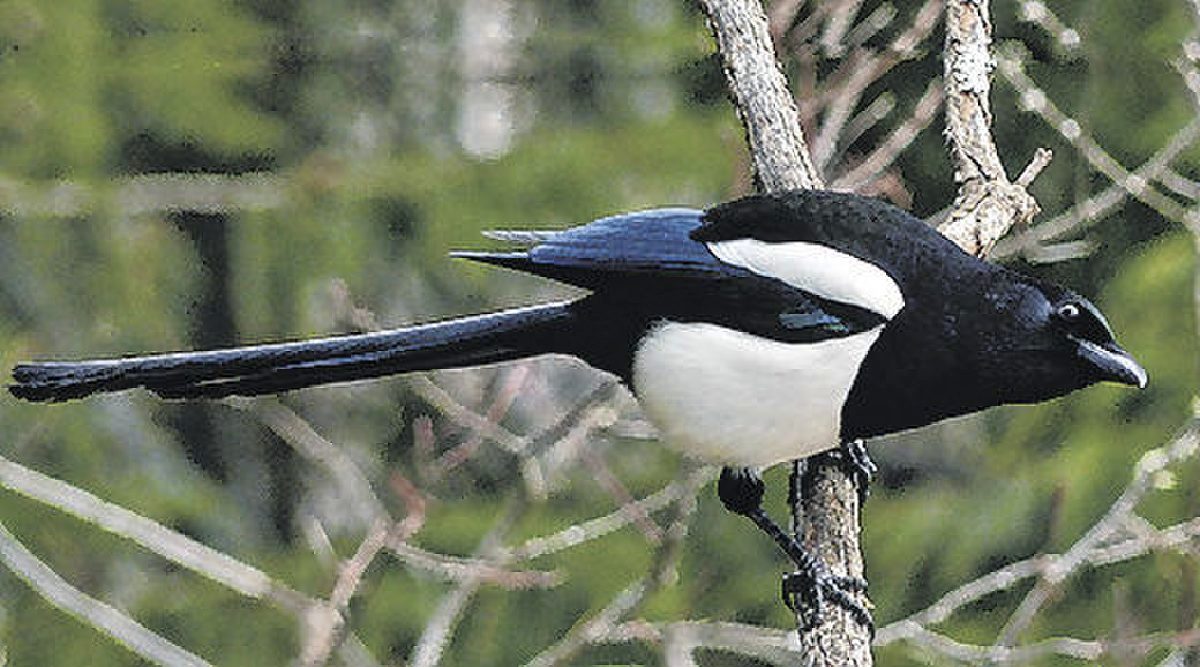By LESLIE BISHOP, guest columnist
I am writing today from our new home in northern New Mexico. Everything feels new and different.
We have moved in elevation from 600 feet to 7,000 feet, from hot and humid June weather to hot and dry days with cold nights. We hike among pinon pine and juniper, desert shrub land, and ponderosa pine and aspen forests, all very different from our familiar deciduous forest of Brown County.

Our bodies are busy acclimating to the decreased oxygen concentration per breath due to higher elevation, and we are taking more afternoon naps! Even our dog has slowed down.
Hikes along frigid mountain streams have given me opportunities to learn new wildflowers and to also see their recognizable pollinators. Columbine with long, red, fused petals attract hummingbirds, and Solomon’s Plume with clusters of small, star-shaped flowers attract solitary bees. Bumblebees are busy collecting nectar from the purple Rocky Mountain Penstemons and wild geraniums. Orange butterflies cluster on brilliant yellow daisy-like flowers, while small blue butterflies cluster in a puddle on the trail. Familiar and unfamiliar greet me and challenge me to keep watching and learning.
In Indiana, I was fascinated by crow behavior. Every time I planted sunflower seeds, resident crows seemed to know exactly where the seeds were. As soon as I turned my back, the crows would follow the row and pluck the seeds from the ground one by one.
One year we watched an injured crow hopping along in our yard with four healthy crows. Even when a human or dog would disturb them, the healthy crows would not fly away but would hop to safety with the injured crow. Crows and their relatives the ravens are known for their large brains and abilities to form strong social bonds. Some species of the crow family (Corvidae) are unusual among birds in their ability to make useful tools to probe insects and larvae from holes. Crows demand our attention by their complex interactions with both people and each other.
Here in New Mexico, other members of the crow family, the black-billed magpies, capture my attention. Magpies are large, handsome birds with long black tail feathers and bright, white wing patches and belly. They frequently perch on the fence posts where we live, and their raucous conversations are unmistakable.

Magpies primarily feed on the ground, hopping along and looking for insects. They can even enhance their search by flipping stones to look for their insect snack. Sometimes they will steal eggs or baby birds from songbirds’ nests or pick ticks off the backs of elk. They also help the vultures clean up carrion and roadkill.
In our neighborhood, magpies construct their nest in a large tree. They build large bushel-basket sized structures of sticks and mud with entrance holes on each side. Inside the structure, they create a cozy mud nest lined with grasses, plant parts and hair.
As with other members of the crow family, magpies are known to exhibit unusual behaviors. Biologists have noted that magpies will gather around a dead magpie in a “funeral” for about 15 minutes, then fly off quietly.
I also read a study that shows that magpies, unlike most non-primate animals, can recognize themselves in a mirror. Self-recognition is considered a form of high intelligence. I am intrigued by these studies and will be watching and learning about these birds as I settle into my new home.
This Nature Note will be my last contribution to the Brown County Democrat. You readers have given back to me in many ways since my first column in 2012. I made new friends because you recognized me through the column, and your comments have encouraged me as a writer.
I will always hold dear my years of exploring and observing nature in Brown County, even as I begin the exciting adventure of learning anew. And I will miss you readers.
I hope all of you will stay curious, spend time outside, and share your love of nature with others. This appreciation of the natural world can connect us wherever we live.
Leslie Bishop is a Brown County resident and retired biology professor from Earlham College. She can be reached through the newspaper at [email protected].

